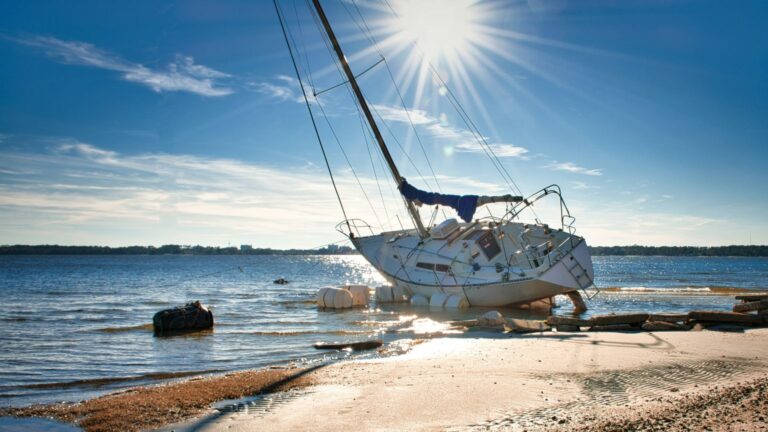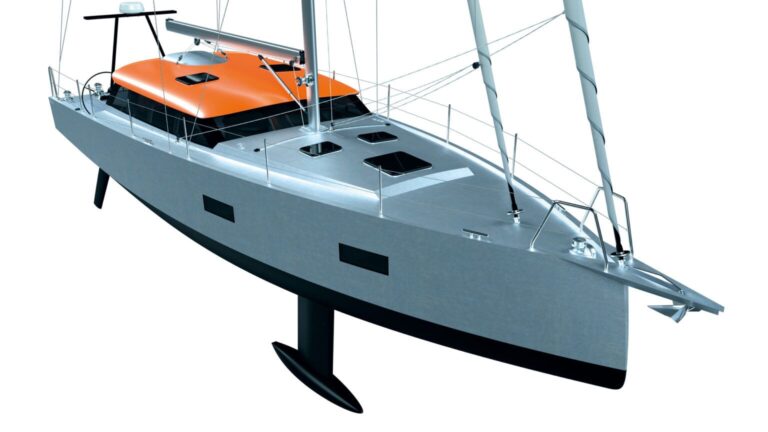Ah, the open water. The sun on your face, the wind in your hair, the gentle rocking of the boat… and the ever-present possibility of an unexpected swim. Whether you’re a seasoned sailor, a casual kayaker, or someone who somehow ended up on a boat because their friend promised “it’ll be fun,” one thing is certain: you need a Personal Flotation Device (PFD).
PFDs, also known as life jackets, vests, or the thing that keeps you from becoming an impromptu mermaid, are essential for marine safety. But before you slap on the nearest inflatable device and declare yourself ocean-proof, let’s take a deep dive (figuratively, of course) into the world of PFDs.
What Exactly is a Personal Flotation Device?
A PFD is any wearable or throwable device designed to keep a person afloat in water. Think of it as your own personal insurance policy against sinking. The U.S. Coast Guard (USCG) and other marine safety organizations categorize them into five main types, each with its own unique strengths, weaknesses, and level of bulkiness.
Let’s break it down so you know which one to grab when the seas get rough (or when your friend forgets they don’t actually know how to sail).
The Five Glorious Types of PFDs
Not all flotation devices are created equal. Some are designed for the high seas, some for the local pond, and some just sit on a boat waiting to be thrown at an unsuspecting swimmer. Choosing the right one depends on where you’re going, what you’re doing, and how much you value both safety and comfort.
To help you navigate the world of life-saving vests, here’s a breakdown of the five main types of PFDs and why you might want (or need) one of each.
Type I: The “I’m Not Taking Any Chances” Offshore Life Jacket
- Best for: Open, rough, and remote waters where rescue might take a while.
- Buoyancy: 22+ lbs for adults (because floating is kind of the point).
- Key Feature: This is the most heavy-duty, turn-you-face-up-when-you’re-unconscious life jacket.
- Downside: It’s bulky. You will look like an orange marshmallow.
Ideal for offshore sailors, commercial vessels, and those who believe in over-preparation. If you ever find yourself reenacting Cast Away, this is the jacket you want.
Type II: The Near-Shore “I Might Fall In” Vest
- Best for: Calm waters where rescue is nearby (aka, the friendly lake where your uncle swears he can still waterski).
- Buoyancy: Around 15.5 lbs for adults.
- Key Feature: Can turn an unconscious person face-up, but not as reliably as Type I.
- Downside: Slightly bulky and not exactly runway-worthy.
A solid option for casual boaters, but if you’re planning on sailing into the abyss, maybe upgrade.
Type III: The “I’m Just Here for the Fun” Flotation Aid
- Best for: Watersports like kayaking, paddleboarding, and casual boating.
- Buoyancy: Around 15.5 lbs.
- Key Feature: Super comfy, lots of mobility, and makes you feel like an action hero.
- Downside: Won’t turn you face-up if you’re unconscious, so stay awake, please.
This is the life jacket of choice for people who value movement over maximum safety. You’ll see these on wakeboarders, sailors, and that one friend who refuses to take it off, even on land.
Type IV: The Throwable “Here, Catch!” Device
- Best for: Boats of all sizes that want to meet safety requirements and have an extra rescue option.
- Buoyancy: Varies, but typically designed to keep an adult afloat.
- Key Feature: Not worn—these are cushions, rings, or horseshoe buoys that you toss to someone who needs help.
- Downside: Useless if no one is around to throw it. (Also, frisbee-ing it at your friend for fun is not recommended.)
A must-have for all boats, but not a substitute for an actual wearable PFD. Because unless you plan on holding onto it like a floating potato, you’re going to need something that straps onto your body.
Type V: The “Fancy, Purpose-Built” Special-Use Device
- Best for: Specific activities like windsurfing, kayaking, or extreme sailing.
- Buoyancy: Varies by design.
- Key Feature: Comes in many specialized designs, including inflatable models that only activate when needed.
- Downside: Must be worn to be effective, and some require manual activation (so if you forget, well… good luck!).
These are the James Bond gadgets of the PFD world. Inflatable ones are especially popular because they’re lightweight and low-profile—perfect for people who want safety without looking like a traffic cone.
Inflatable vs. Foam PFDs: The Ultimate Showdown
- Foam PFDs: Reliable, don’t need activation, great for kids and less experienced swimmers. Downside? They’re bulkier.
- Inflatable PFDs: Lightweight, sleek, and won’t make you feel like the Stay Puft Marshmallow Man. Downside? If it doesn’t inflate when you need it to, well… you’ll wish it did.
For many boaters, hybrid PFDs (which use both foam and inflatable elements) are the best of both worlds.
How to Pick the Right PFD (Without Looking Like a Clownfish)
- Check the Label: Make sure it’s U.S. Coast Guard-approved (or equivalent for your country).
- Fit Matters: It should be snug but not suffocating. If it slides over your head when pulled up, it’s too loose.
- Consider Your Activity: Kayaking? Go for Type III. Open ocean sailing? Type I might be your best friend.
- Think About Comfort: The best PFD is the one you’ll actually wear. If it’s uncomfortable, you won’t use it, which defeats the purpose.
- Maintenance is Key: Check for wear and tear, especially on inflatable models. A leaky PFD is just a very disappointing vest.
Final Thoughts: Wear It, Love It, Live to Tell the Tale
A PFD is not just a floaty fashion statement—it’s your best friend in an emergency. Whether you’re braving the high seas or just enjoying a day at the lake, having the right one (and actually wearing it) can make all the difference.
So the next time you’re heading out on the water, grab your life jacket, secure the straps, and sail confidently, knowing that if Poseidon decides to mess with you, at least you’ll be floating in style.
Stay safe, stay afloat, and happy boating!




